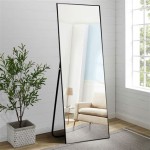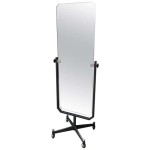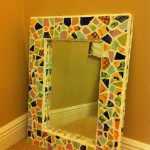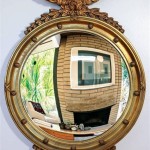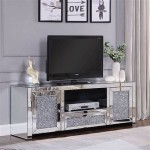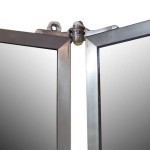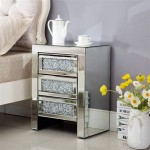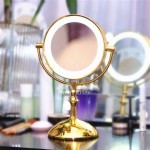Mirror, Mirror on the Wall: The Art of Strategic Mirror Placement in Interior Design
Mirrors are more than just reflective surfaces; they are versatile design tools that can dramatically transform a space. Proper mirror placement can enhance natural light, create an illusion of spaciousness, and add a touch of elegance to any room. Understanding the principles of mirror placement allows homeowners and designers to maximize their potential and avoid common pitfalls.
Amplifying Natural Light
One of the most effective uses of mirrors is to amplify natural light. Placing a mirror opposite or adjacent to a window can bounce sunlight deeper into a room, brightening dimly lit areas and reducing the need for artificial lighting. This technique is particularly valuable in smaller rooms or spaces with limited window access.
Creating an Illusion of Space
Strategically placed mirrors can visually expand a room, making it feel larger and more airy. Large mirrors on a wall can double the perceived size of a space, while smaller, strategically placed mirrors can create depth and dimension. Placing a mirror at the end of a narrow hallway, for example, can make the hallway appear longer.
Highlighting Architectural Features or Artwork
Mirrors can draw attention to specific design elements within a room. Positioning a mirror to reflect a beautiful piece of artwork, a striking architectural detail, or a well-curated vignette can enhance its visual impact and create a focal point within the space.
Concealing Imperfections
While mirrors are often used to enhance aesthetics, they can also be employed to subtly conceal flaws. A strategically placed mirror can camouflage an awkward corner, a less-than-perfect wall, or an unsightly structural element. Careful consideration of angles and placement is crucial for this technique to be effective.
Considering the Reflected View
Before placing a mirror, it's crucial to evaluate what it will reflect. A mirror should reflect something visually pleasing, such as a garden view, artwork, or a well-designed space. Avoid placing mirrors where they will reflect cluttered areas, unattractive views, or glaring light sources.
Choosing the Right Size and Shape
Mirrors come in a vast array of shapes and sizes, each offering a different design opportunity. Large, rectangular mirrors can create a classic and elegant look, while smaller, decorative mirrors can add a touch of personality and whimsy. Circular mirrors can soften a room's angles, and uniquely shaped mirrors can serve as artistic focal points.
Using Mirrors in Different Rooms
The principles of mirror placement apply to various rooms throughout the home, but with unique considerations for each space. In living rooms, large mirrors can enhance the sense of spaciousness and reflect natural light. In dining rooms, mirrors can create a more formal and elegant atmosphere. In bedrooms, mirrors should be placed thoughtfully to avoid reflecting the bed, which is considered bad feng shui by some. In bathrooms, mirrors are essential for functionality but can also be used to enhance the design and create a spa-like feel. In entryways, a well-placed mirror allows for last-minute appearance checks and can add a decorative touch to the space.
The Impact of Mirror Frames
The frame of a mirror plays a significant role in its overall aesthetic impact. Ornate frames can add a touch of traditional elegance, while simple, modern frames can create a sleek and contemporary feel. The frame material and finish should complement the existing décor and style of the room.
Creating a Gallery Wall with Mirrors
Mixing mirrors of different sizes and shapes can create a visually dynamic gallery wall. Combining mirrors with framed artwork and photographs adds depth and interest to the display. This technique is particularly effective in hallways or on large accent walls.
Avoiding Common Mirror Placement Mistakes
While mirrors offer numerous design benefits, incorrect placement can detract from a room's aesthetic. Avoid placing mirrors directly opposite each other, as this can create a disorienting and visually cluttered effect. Additionally, avoid hanging mirrors too high or too low. The center of the mirror should generally be at eye level for optimal viewing.
Maintaining and Cleaning Mirrors
To keep mirrors looking their best, regular cleaning is essential. Use a glass cleaner and a soft, lint-free cloth to remove fingerprints, smudges, and dust. Avoid using abrasive cleaners, which can scratch the mirror surface. Regularly inspect mirror frames for any signs of damage or wear.
The Psychology of Mirror Placement
Mirror placement can subtly influence the mood and atmosphere of a room. Mirrors can create a sense of openness and energy, but poorly placed mirrors can also contribute to feelings of unease or disorientation. Thoughtful consideration of the psychological impact of mirror placement is crucial for creating a harmonious and balanced space.

Interior Design Tips The Do S And Don T Of Mirror Placement

Interior Design Tips The Do S And Don T Of Mirror Placement

Interior Design Tips The Do S And Don T Of Mirror Placement

Interior Designer S Guide To Beautiful Mirror Placement

5 Mirror Vastu Placement Tips For A Happy Home Livspace

Mirrors Placement Positioning Don Ts Of Mirror

5 Interior Design Tips To Install Mirrors Ais Glass
:max_bytes(150000):strip_icc()/165518337_723013885033254_7695011810137539836_n1-6b357a8cd9cb4c6bac664c7a60f478b0.jpg?strip=all)
Expert Tips For Decorating With Mirrors

Mirror Vastu Tips For Placing At Home
:strip_icc()/LightDwell-3095c5279d0b4511b10d154f3a21a9b7.jpg?strip=all)
10 Feng Shui Rules For Mirrors According To Experts

